
In recreational mathematics, a square array of numbers, usually positive integers, is called a magic square if the sums of the numbers in each row, each column, and both main diagonals are the same. The 'order' of the magic square is the number of integers along one side (n), and the constant sum is called the 'magic constant'. If the array includes just the positive integers , the magic square is said to be 'normal'. Some authors take magic square to mean normal magic square.

The Magic Roundabout is an English-language children's television programme that ran from 1965 to 1977. It used the footage of the French stop motion animation show Le Manège enchanté but with completely different scripts and characters.
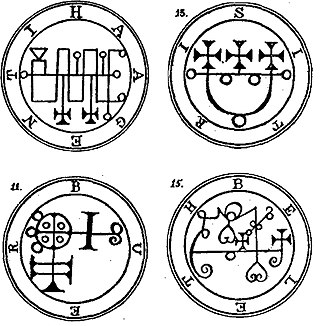
A sigil is a type of symbol used in magic. The term usually refers to a pictorial signature of a deity or spirit. In modern usage, especially in the context of chaos magic, a sigil refers to a symbolic representation of the practitioner's desired outcome.

Television Broadcasts Limited (TVB) is a television broadcasting company based in Hong Kong SAR. The company operates five free-to-air terrestrial television channels in Hong Kong, with TVB Jade as its main Cantonese language service, and TVB Pearl as its main English service. TVB is headquartered at TVB City at the Tseung Kwan O Industrial Estate.

Mr Benn is a character created by David McKee who originally appeared in several children's books. The first, Mr Benn Red Knight, was published in 1967, followed by three more; these became the basis for an animated television series of the same name originally transmitted by the BBC in 1971 and 1972.
Wacaday is a children's television series in the United Kingdom that ran in TV-am's school-holidays slot from October 1985 until 1992, in an 8:50-9:25 a.m. slot, and was hosted by Timmy Mallett.

Jim'll Fix It is a British television series broadcast by the BBC between May 1975 and July 1994. It was devised by Bill Cotton, presented by Jimmy Savile and produced by Roger Ordish. The show encouraged children to write a letter to Savile with a "wish" that would come true at the end of each episode, upon which the child would be granted a medal. Famous people who appeared on the show included Muhammad Ali, Doctor Who stars Tom Baker and Colin Baker, Rolf Harris, Margaret Thatcher and Peter Cushing.
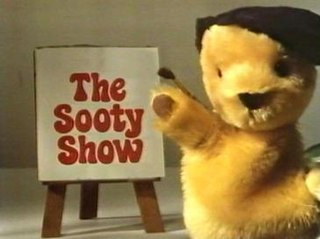
The Sooty Show is a British children's television series, created by Harry Corbett, and produced for the BBC from 1955 to 1967, and then for ITV from 1968 until 1992. The show, part of the Sooty franchise, focuses on the mischievous adventures of the glove puppet character of the same name, alongside his friends Sweep and Soo, and their handler. Between 1955 and 1975, Corbett presented the programme until his retirement, before it was taken over by his son Matthew Corbett. It also co-starred Marjorie Corbett as the voice of Soo from the character's debut in 1964, until her retirement in 1981, whereupon Brenda Longman replaced her.

Madeleine Hamilton Smith was a 19th-century Glasgow socialite who was the accused in a sensational murder trial in Scotland in 1857.
Walter Trump is a German mathematician and retired high school teacher. He is known for his work in recreational mathematics.
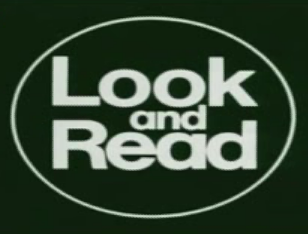
Look and Read is a BBC Television programme for primary schools, aimed at improving children's literacy skills. The programme presents fictional stories in a serial format, the first of which was broadcast in 1967 and the most recent in 2004, making it the longest-running nationally broadcast programme for schools in the United Kingdom. The series remains popular among school children. Episodes of Look and Read were sometimes repeated on the CBBC Channel.
Andrew Mark O'Connor is an English actor, comedian, magician, television presenter and executive producer.
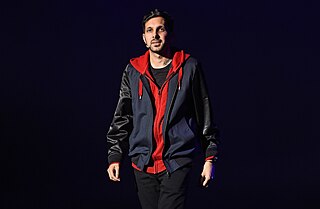
Steven Frayne, better known by his former stage name Dynamo, is an British magician born in Bradford, West Yorkshire. His television show Dynamo: Magician Impossible ran from July 2011 to September 2014, and saw him win the Best Entertainment Programme award at the 2012 and 2013 Broadcast Awards. Dynamo has toured the world, and his Seeing Is Believing arena tour was seen by over 750,000 people across the UK, Australia, South Africa and New Zealand.

Sooty is a British children's television media franchise created by Harry Corbett incorporating primarily television and stage shows. The franchise originated with his fictional glove puppet character introduced to television in 1955, with the franchises focused around the adventures of the character – a mute yellow bear with black ears and nose, who is kind-hearted but also cheeky, performs magic tricks and practical jokes, and squirts his handler and other people with his water pistol, including on other television programmes the guest stars on. The franchise itself also includes several other puppet characters who were created for television, some of whom became the backbone to performances, and features additional elements including an animated series, two spin-off series for the direct-to-video market, and a selection of toy merchandising.
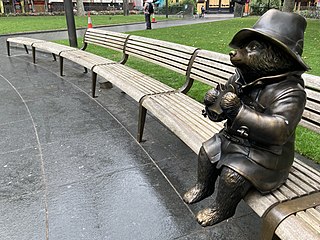
Paddington Bear is a fictional character in children's literature. He first appeared on 13 October 1958 in the children's book A Bear Called Paddington and has been featured in more than twenty books written by British author Michael Bond, and illustrated by Peggy Fortnum, David McKee, and other artists.
Philip Green, sometimes credited as Harry Philip Green or Phil Green, was a British film and television composer and conductor, and also a pianist and accordion player. He made his name in the 1930s playing in and conducting dance bands, performed with leading classical musicians, scored up to 150 films, wrote radio and television theme tunes and library music, and finally turned to church music at the end of his life in Ireland, a song from which period proved so popular that it reached No 3 in the Irish charts in 1973.
Get Squiggling is a British children's television series created and produced by Jo Killingley at Dot To Dot Productions, directed by Adrian Hedley, and broadcast on CBeebies and BBC Two in the UK.
A few months after the 1969 premiere of the children's television program Sesame Street in the U.S., talks began in the United Kingdom to broadcast the programme or develop a co-production on British television. The idea was controversial at the time; the BBC was opposed to it, and ITV was reluctant. Response from parents, educators, and television officials to the show was varied, ranging from distaste to acceptance. After much public debate, the BBC chose not to air Sesame Street for several reasons, including the show's educational methods, its creation for American audiences, and the UK's long history of quality educational television programmes for young children. ITV, after much research, including a report entitled Reactions to Sesame Street in Britain, 1971, chose to air Sesame Street on a limited basis. It then switched to Channel 4 in the 1980s and aired there until 2001, when it was pulled from its regular schedule, replaced by The Hoobs.
Throughout the years, Children's BBC, and later CBBC and CBeebies, have used a number of different identities. The branding of the stranded service is distinctive both in the past and at present.
Issi Dye is an Australian entertainer.










